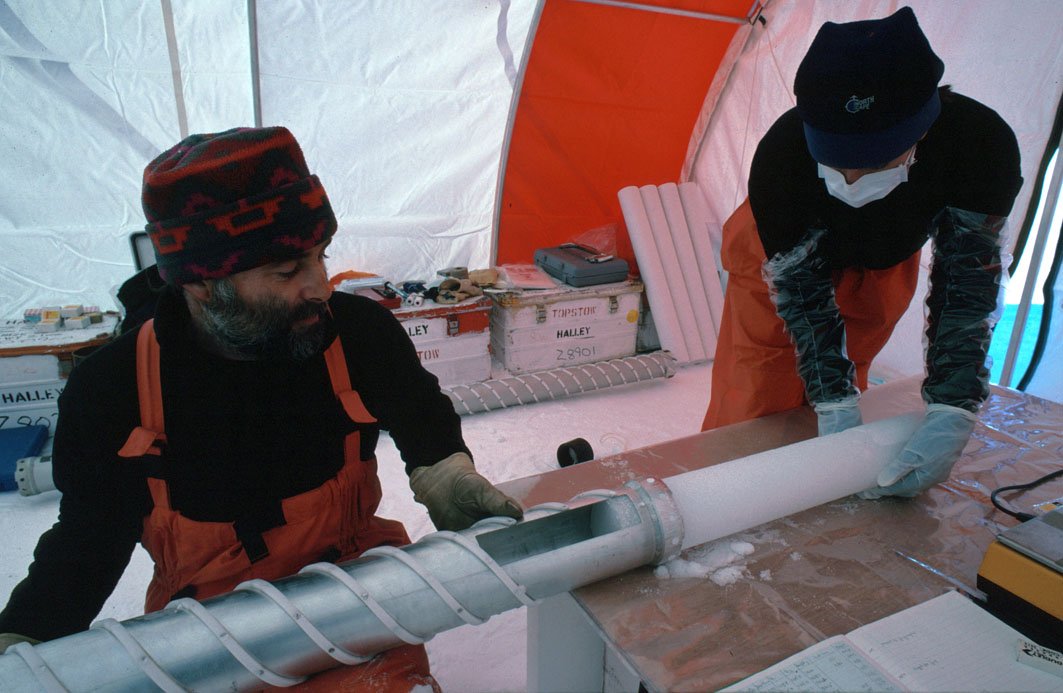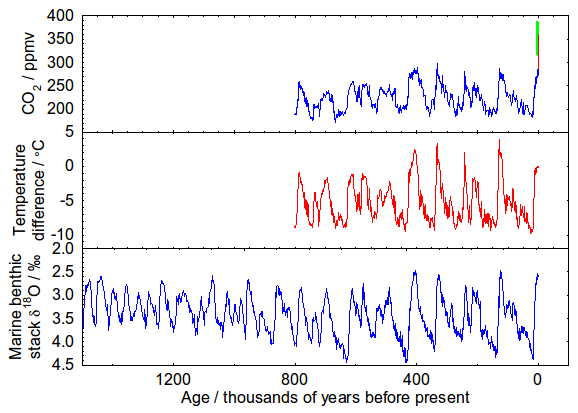Scientists in CCfCS work to understand past climate by collecting, analysing and interpreting sediments and rocks, ice cores and geophysical data, and through modelling.
Understanding how and why climate has changed in the past is crucial for several reasons. The observational record is very short, and does not provide the perspective with which to view recent and future trends. Only by looking at a much lo nger timescale can we view natural variability, and the response of different parts of the Earth system to perturbations. This applies particularly to processes related to ice sheets and the carbon cycle, which have timescales of centuries to millennia. Finally there are some fascinating questions about the nature of the Earth system that simply require an answer – for example, why does Earth cycle through large swings in climate from a situation with large amounts of ice cover to the relatively mild conditions of today?
nger timescale can we view natural variability, and the response of different parts of the Earth system to perturbations. This applies particularly to processes related to ice sheets and the carbon cycle, which have timescales of centuries to millennia. Finally there are some fascinating questions about the nature of the Earth system that simply require an answer – for example, why does Earth cycle through large swings in climate from a situation with large amounts of ice cover to the relatively mild conditions of today?
Scientists in Cambridge address these issues by collecting, analysing and interpreting sediments and rocks, ice cores and geophysical data, and through modelling. The British Antarctic Survey (BAS) and the Department of Earth Sciences work on marine sediments and ice cores, as well as records from deep time held in geological materials. Scott Polar Research Institute and BAS study evidence for past ice sheet extent. BAS, DAMTP, Geography and Chemistry have all been involved in work that applies state-of-the-art models to past climate changes. Areas of particular interest within Cambridge include:
- Dynamics of climate on glacial-interglacial and millennial timescales
- Climate and sea level during interglacials
- Past changes in the extent of ice sheets and sea ice
- Understanding climate proxies including water isotopes in ice cores
- The role of the terrestrial and ocean carbon cycles in past climate change
- Atmospheric chemistry in the past
In addition, researchers in the Department of Archaeology and Department of Earth Sciences work on human and environment interaction, and human resilience and sustainability in the face of a variable and changing climate. Much of this research focusses on the Holocene, particularly assessing the dynamics and impact of the 'global' climate change events at 8.2 and 4.2 ka BP, and human responses to those events.

Palaeoclimate scientists in Cambridge seek to understand the sequence of warm and cold periods shown in this figure of CO2 and Antarctic temperature over the last 800,000 years, and of changes in marine sediments over longer periods

